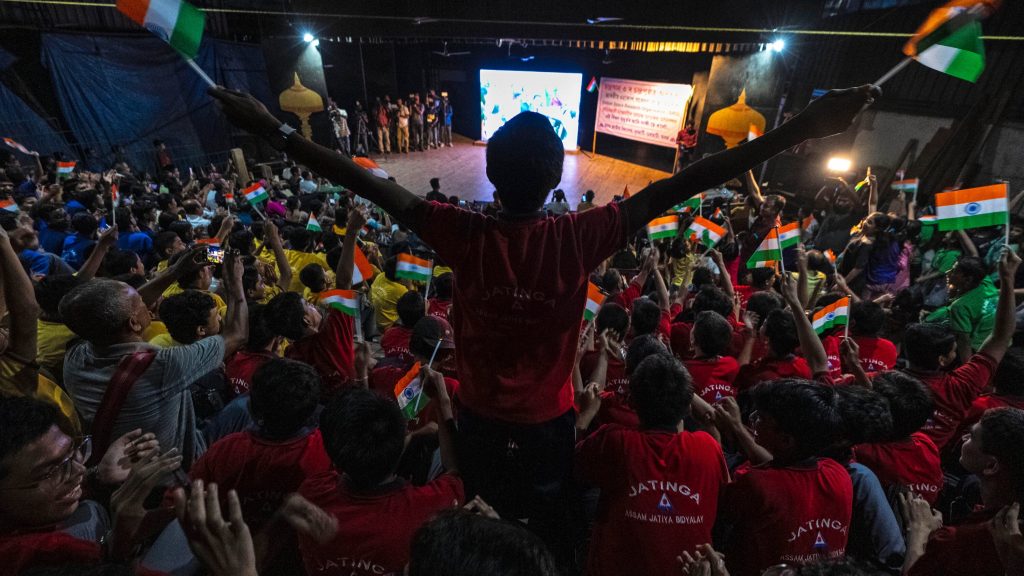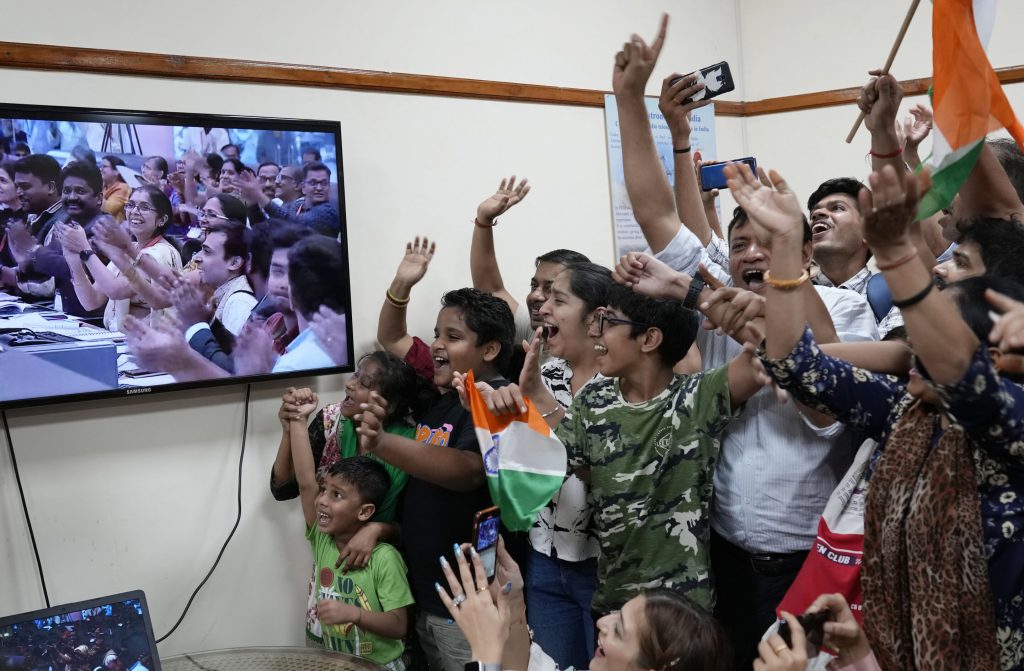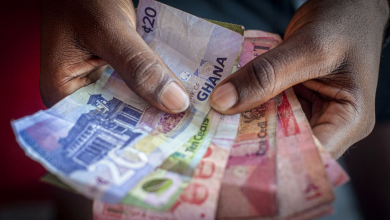India makes history after landing spacecraft Chandrayaan-3 on moon

India has successfully landed a spacecraft on the moon, the fourth nation to accomplish a moon landing, further demonstrating its growing technological and space prowess.
On Wednesday, the Indian spacecraft Chandrayaan-3 touched down on the south pole of the moon, an area that has not yet been explored but is thought to contain important reserves of frozen water and valuable elements.
The mission, which took place just days after a similar Russian lander crashed, is viewed as essential to lunar exploration and reaffirms India’s status as a space power.
The head of the Indian Space Research Organization (ISRO), S Somanath, declared as the spacecraft touched down on the moon, “India is on the moon”.

A successful moon mission would support Prime Minister Narendra Modi’s portrayal of an ascendant India asserting its place among the world’s elite and would increase his support ahead of a crucial general election next year.
Modi, who was seen waving the Indian flag as he watched the landing from South Africa, where he is attending the BRICS summit, said, “this is a victory cry of a new India”.
As the spacecraft touched down, scientists and government officials applauded, hugged, and clapped. The government is now attempting to encourage investment in satellite-related businesses and private space launches.
The mission cost $74.6 million, which is significantly less than those of other countries and a testament to India’s cost-effective space engineering.
Following the failure of Russia’s Luna-25 mission less than a week prior, this was India’s second attempt to land a spacecraft on the moon. As the spacecraft got closer to the surface, viewers across the nation prayed while glued to their televisions.
Sanskrit and Hindi translations of Chandrayaan are “moon vehicle”. 2019 saw the successful orbiter deployment of ISRO’s Chandrayaan-2 mission, but the lander’s failure.
“In general, it’s very difficult to land on the south part of the moon. Most vehicles have landed in the equator region of the moon, where the characteristics of the moon are much easier to deal with,” said Christopher Conselice, professor of extragalactic astronomy at the University of Manchester.
“It’s a very historic day, and I really look forward to the science we’re going to see come out of the [mission]. I think it will be quite interesting, and I hope it encourages other missions to do similar things around the moon,” he added.

The Chandrayaan-3 should continue operating for another two weeks while carrying out a number of experiments, including a spectrometer analysis of the lunar surface’s mineral makeup.
Carla Filotico, a consultant at SpaceTec Partners, said that India’s moon landing was “very important” because it helped show off its “technological advancement”.
“It is important for scientific exploration as it is landing on the [moon’s] South Pole and it will allow India to explore the water and ice on the moon,” Filotico said.
“[It will help in] accumulating data on science and geology of the moon and gathering information on exploration of the solar system’s history and evolution.”
Source- Aljazeera





